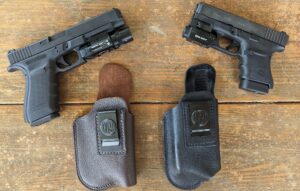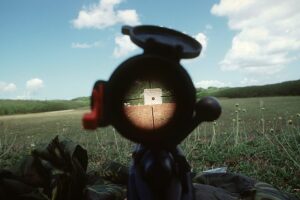In February, the US Army is piloting the construction of barracks using innovative 3D-printing technology at Fort Bliss, Texas.
This groundbreaking initiative, spearheaded by Sergeant Major Michael Perry, the senior enlisted advisor to the deputy chief of staff G-9, aims to improve Soldier living conditions, enhance installation resilience, and explore the potential of this cutting-edge building method.
Building Better for Soldiers
Fort Bliss is currently constructing three first-of-their-kind 3D-printed barracks, each designed to house 72 Soldiers.
But what’s the big deal about these 3D-printed barracks?
First off, they’re built for comfort. The walls are made with a special material that resists mold and keeps things energy-efficient.
No more battling mildew or sweltering in the Texas heat—sounds pretty sweet, right?
Plus, 3D printing lets them crank these barracks out way faster than traditional building methods.
“By prioritizing Soldier well-being with mold-resistant materials and energy-efficient designs, these new barracks truly represent how ‘it’s better at Bliss,’” said Fort Bliss Command Sergeant Major Dave Sweeney.
Think of it like microwaving your house instead of waiting months for construction crews to finish. This means soldiers get settled in quicker, and the Army saves some cash—everyone wins!
Inside the Army’s 3D printed barracks pilot project at Fort Bliss, Texas, February 6, 2024. (Image source: US Army)
Innovation Meets Efficiency
These aren’t just glorified concrete tents, though. They’re actually the biggest 3D-printed buildings in the Western Hemisphere, clocking in at over 5,700 square feet each.
That’s a lot of space for soldiers to relax and unwind after a long day of training.
The coolest part? This pilot program is paving the way for using 3D printing in more military construction projects.
The buildings are being built according to the latest military building codes, so they’re not just some experimental eyesore.
This could mean faster construction times in remote locations, disaster zones, or anywhere the Army needs a quick and sturdy base.
“With the promise of energy efficiency and cost savings, this pilot embodies the Army’s dedication to innovation in meeting the evolving needs of our force,” said Sergeant Major Perry. “We’re exploring ways to build better and faster, while also ensuring our Soldiers thrive in sustainable living quarters.”
Building Tough, Living Easy
The company building these barracks, ICON, is using a special material called Lavacrete.
This stuff is like a superhero for concrete—it can handle extreme weather and withstand natural disasters like a boss.
Imagine a hurricane rolling in, and your barracks are basically like, “Yawn, another Tuesday.”
Plus, Lavacrete helps keep energy bills low, which is a win for the environment and the Army’s budget.
On top of that, Lavacrete is supposed to last longer than traditional building materials.
Think of it as an investment—the Army builds these once, and the soldiers enjoy them for years to come.
No more leaky roofs or crumbling walls—just solid, comfortable living quarters.
Strong Barracks, Strong Soldiers
There’s a reason the Army is so interested in making its bases more resilient.
A strong base means a more prepared fighting force.
If a base can weather a storm or bounce back from an attack quickly, the soldiers stationed there can stay focused on the mission.
It’s all about creating a stable environment for troops to train and be ready for anything.
The Future of Military Housing?
This pilot program is a big step towards a future where the Army uses 3D printing to build everything from barracks to maybe even lookout towers or bunkers (imagine a giant 3D-printed tank trap!).
It’s a whole new way of thinking about construction, and the possibilities are pretty darn exciting.
So, the next time you see a soldier, ask them if they’ve ever lived in a 3D-printed house. You might just be talking to a pioneer in the future of military housing.



